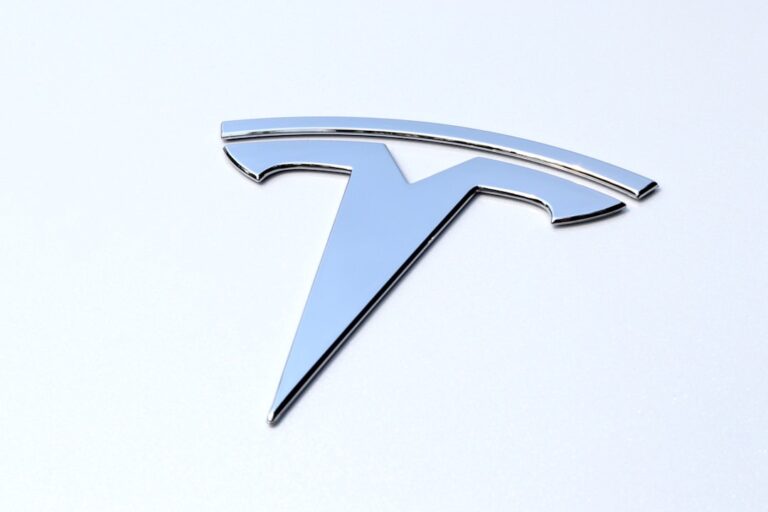
Tesla, Inc. (TSLA) has become a household name, not just for its innovative electric vehicles but also for its dynamic stock performance. Founded in 2003 by a group of engineers including Elon Musk, Tesla has revolutionized the automotive industry and has positioned itself as a leader in sustainable energy solutions.
The company’s stock has seen meteoric rises and dramatic falls, making it a focal point for investors and analysts alike. As of October 2023, TSLA continues to capture the attention of both seasoned investors and newcomers, with its stock price reflecting the company’s ambitious goals and the broader market dynamics. The allure of Tesla stock lies not only in its past performance but also in its potential for future growth.
With a market capitalization that often fluctuates around the $800 billion mark, Tesla is one of the most valuable car manufacturers in the world. Investors are drawn to the company’s vision of a sustainable future, which includes not just electric vehicles but also energy storage solutions and solar products. As we delve deeper into the current market trends and factors influencing Tesla’s stock, it becomes clear that understanding this dynamic company is essential for anyone looking to navigate the modern investment landscape.
Key Takeaways
- Tesla stock has been a hot topic in the investment world, with its volatile nature and potential for high returns.
- Current market trends show a bullish outlook for Tesla stock, with increasing demand for electric vehicles and renewable energy solutions.
- Factors driving the bullish outlook include Tesla’s innovative technology, expanding market share, and strong leadership under Elon Musk.
- Potential risks and challenges for Tesla stock include competition in the electric vehicle market, regulatory changes, and production issues.
- Expert opinions and forecasts vary, with some analysts predicting continued growth for Tesla stock while others remain cautious.
Analysis of Current Market Trends
Shifting Towards Electric Vehicles
In recent months, there has been a noticeable shift towards electric vehicles (EVs) as governments worldwide implement stricter emissions regulations and consumers become more environmentally conscious. According to a report by the International Energy Agency (IEA), global electric car sales surged by 40% in 2022, with projections indicating that this trend will continue as battery technology improves and charging infrastructure expands.
Tesla’s Strategic Expansion
Moreover, Tesla’s strategic moves in expanding its production capabilities have positioned it favorably within the market. The opening of Gigafactories in Berlin and Texas has not only increased production capacity but also reduced shipping costs and delivery times for customers in Europe and North America. This expansion aligns with the growing demand for EVs, as more consumers seek alternatives to traditional gasoline-powered vehicles.
Resilience Amidst Market Volatility
As a result, Tesla’s stock has shown resilience even amidst broader market volatility, reflecting investor confidence in the company’s long-term strategy.
Factors Driving Bullish Outlook

Several key factors contribute to the bullish outlook on Tesla stock. First and foremost is the company’s commitment to innovation. Tesla consistently invests heavily in research and development, focusing on enhancing battery technology, autonomous driving capabilities, and overall vehicle performance.
This relentless pursuit of innovation has allowed Tesla to maintain a competitive edge over traditional automakers and new entrants in the EV market. Additionally, Tesla’s brand loyalty is unparalleled. The company has cultivated a passionate customer base that not only purchases its vehicles but also advocates for its mission of sustainability.
This strong brand identity translates into repeat sales and referrals, further solidifying Tesla’s market position. Furthermore, as more consumers transition to electric vehicles, Tesla stands to benefit from economies of scale, which could lead to lower production costs and higher profit margins. To learn more about Tesla’s commitment to innovation and brand loyalty, you can visit the official Tesla website.
Potential Risks and Challenges
| Category | Description | Impact |
|---|---|---|
| Market Risks | Changes in consumer demand or market trends | Decreased sales and revenue |
| Operational Risks | Supply chain disruptions or production issues | Delays in product delivery or increased costs |
| Financial Risks | Fluctuations in currency exchange rates or interest rates | Negative impact on profits and cash flow |
| Regulatory Risks | Changes in laws or regulations affecting the industry | Legal penalties or compliance costs |
Despite the optimistic outlook for Tesla stock, potential risks and challenges loom on the horizon. One significant concern is the increasing competition in the electric vehicle market. Established automakers like Ford, General Motors, and Volkswagen are ramping up their EV offerings, which could erode Tesla’s market share.
As these companies invest heavily in their electric vehicle lineups, they may attract consumers who were previously loyal to Tesla. Another challenge lies in supply chain disruptions that have plagued many industries since the onset of the COVID-19 pandemic. Tesla relies on a complex network of suppliers for critical components such as batteries and semiconductors.
Any disruptions in this supply chain could hinder production capabilities and delay vehicle deliveries, ultimately impacting revenue and investor sentiment. Additionally, regulatory changes and potential tariffs on imported materials could further complicate Tesla’s operational landscape.
Expert Opinions and Forecasts
Expert opinions on Tesla stock vary widely, reflecting the complexity of the automotive and technology sectors. Some analysts remain bullish on TSLA, citing its innovative edge and strong brand loyalty as key drivers of future growth. For instance, analysts at Wedbush Securities have set a price target of $1,000 per share, emphasizing that Tesla’s expansion into new markets and continued advancements in battery technology will fuel its growth trajectory.
Conversely, some experts express caution regarding Tesla’s valuation. Critics argue that the stock is overvalued compared to traditional automakers, given its high price-to-earnings ratio. They caution investors to consider potential market corrections that could impact TSLA’s stock price significantly.
As with any investment, it is crucial for investors to weigh these differing opinions carefully before making decisions.
Technical Analysis and Price Targets

Volatility and Key Levels
As of October 2023, TSLA has experienced significant volatility, with notable support levels around $700 per share and resistance levels near $900 per share. Analysts often use these levels to gauge potential entry or exit points for investors.
Price Targets and Future Outlook
Price targets for TSLA vary among analysts but generally reflect a consensus that the stock will continue to experience upward momentum in the long term. For instance, some analysts predict that if Tesla can maintain its production growth rate and successfully navigate supply chain challenges, the stock could reach $1,200 within the next 12 months.
Investor Vigilance
However, it is essential for investors to remain vigilant about market conditions and be prepared for fluctuations that may arise from external factors.
Long-Term Growth Potential
Tesla’s long-term growth potential remains one of its most compelling attributes. The company’s vision extends beyond just manufacturing electric vehicles; it aims to create an ecosystem of sustainable energy solutions that includes solar energy products and energy storage systems through its subsidiary, SolarCity. This diversification positions Tesla uniquely within the renewable energy sector.
Furthermore, as global demand for electric vehicles continues to rise—projected to reach 30% of total vehicle sales by 2030—Tesla is well-positioned to capitalize on this trend. The company’s ongoing investments in battery technology are crucial for maintaining its competitive advantage as battery costs decrease and energy density improves. With plans to introduce new models like the Cybertruck and an affordable compact car aimed at mass-market consumers, Tesla’s growth trajectory appears promising.
Conclusion and Investment Recommendations
In conclusion, Tesla stock presents a compelling opportunity for investors willing to navigate its inherent risks and volatility. The company’s commitment to innovation, strong brand loyalty, and strategic expansion efforts position it favorably within the rapidly evolving automotive landscape. However, potential challenges such as increased competition and supply chain disruptions warrant careful consideration.
For those looking to invest in TSLA, a balanced approach is advisable—considering both short-term trading opportunities based on technical analysis and long-term investment strategies that align with Tesla’s growth potential. As always, conducting thorough research and staying informed about market trends will be crucial for making sound investment decisions. In summary, while Tesla stock may be subject to fluctuations driven by external factors, its long-term prospects remain bright as it continues to lead the charge toward a sustainable future.
— Further Reading: 1. International Energy Agency (IEA) – [Global EV Outlook 2023](https://www.iea.org/reports/global-ev-outlook-2023)
2. Wedbush Securities – [Tesla Price Target Report](https://www.wedbush.com)
3.
Bloomberg – [Tesla Stock Analysis](https://www.bloomberg.com/quote/TSLA:US)
4. CNBC – [Tesla’s Market Position](https://www.cnbc.com/2023/10/01/tesla-market-analysis.html)
5. Reuters – [Electric Vehicle Market Trends](https://www.reuters.com/business/autos-transportation/electric-vehicle-market-trends-2023-10-01) And here’s a kid-friendly joke: Why did the car apply for a job?
Because it wanted to get a little “exhaust” from work!
In a recent article discussing the Tesla stock price forecast, analysts are closely monitoring the competition between Tesla and BYD as Tesla’s stock tumbles to key support levels while BYD’s sales soar. This article provides valuable insights into the factors influencing Tesla’s stock performance and the potential impact of BYD’s success on the market. For more information on this topic, you can read the full article here.
FAQs
What factors can influence Tesla’s stock price forecast?
Factors that can influence Tesla’s stock price forecast include the company’s financial performance, production and delivery numbers, technological advancements, competition in the electric vehicle market, government regulations and policies, and overall market conditions.
How does Tesla’s production and delivery numbers affect its stock price forecast?
Tesla’s production and delivery numbers are closely watched by investors as they indicate the company’s ability to meet demand and generate revenue. Higher production and delivery numbers can positively impact Tesla’s stock price forecast, while lower numbers can have a negative impact.
What role does competition in the electric vehicle market play in Tesla’s stock price forecast?
Competition in the electric vehicle market can impact Tesla’s stock price forecast as it affects the company’s market share, pricing power, and ability to innovate. Increased competition from other automakers can put pressure on Tesla’s stock price forecast, while successful differentiation and market leadership can have a positive impact.
How do government regulations and policies affect Tesla’s stock price forecast?
Government regulations and policies, such as incentives for electric vehicles, emissions standards, and trade policies, can impact Tesla’s stock price forecast. Favorable regulations and policies can boost demand for Tesla’s products and positively impact its stock price forecast, while unfavorable regulations and policies can have the opposite effect.
What are some risks that could impact Tesla’s stock price forecast?
Risks that could impact Tesla’s stock price forecast include production delays, quality control issues, supply chain disruptions, changes in consumer preferences, regulatory changes, geopolitical tensions, and macroeconomic factors. These risks can lead to volatility in Tesla’s stock price forecast.
